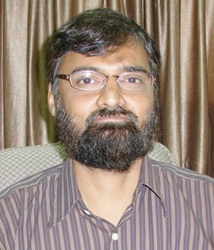FOCUS
Every year the government presents estimates of what has been produced and consumed and what the government is planning to produce and consume in the coming year. In essence, the budget is a policy document that outlines the futurist planning goals along with the financial allocations to achieve them. In Pakistan, the budget has now become merely an exercise of revealing the shining economic and social sector performance of the government instead of setting a strategic direction for the economy to achieve various socio-economic development objectives.
 With adopting the international development agenda, called the sustainable development goals (SDGs) on September 25, 2015, the responsibilities and obligations of governments (both federal and provincial) have increased manifold. The goals are set for year 2030.
With adopting the international development agenda, called the sustainable development goals (SDGs) on September 25, 2015, the responsibilities and obligations of governments (both federal and provincial) have increased manifold. The goals are set for year 2030.
One may ask the relevance of SDGs with the forthcoming budgets of federal and provincial governments as it is more of a vision, planning and execution exercise at various governmental levels. This is partly true from its functional aspects but streamlining the yearly budgetary assignments at all levels is also imperative for the achievement of certain long-term goals.
Earlier the budgets were presented for short-term solutions of the ongoing issues, such as poverty, security and stabilisation with growth. The absence of long-term vision in the budgets is mainly responsible for the low human development in the country. The current dismal state of social development is partly an outcome of the lack of focus and political will of the successive governments to allocate adequate resources on an annual basis to improve the well being of the people. Sadly, Pakistan’s ranking of human development index has not improved in the last 26 years, instead it is gradually moving towards the lowest bottom level.
It has been argued that goals and targets of SDGs framework are too ambitious for a developing country like Pakistan. SDGs are complex in terms of its structure, allocation of functional responsibilities and cross linkages with other goals and targets. The federal and provincial governments will have to work in cohesion despite having political differences and diverse development priorities. In this way, SDGs are the rare opportunity for the national integration in which all four provinces and federation have one common agenda of development.
The SDGs framework includes 17 goals and 169 targets with approximately over 300 indicators. In the context of Pakistan, the 18th constitutional amendment devolved important social development ministries to the provincial level, such as education, health, population welfare, social welfare and special education, and women development.
The implementation of SDGs will face overlapping in the functions and allocation of resources as some goals come directly in the domain of the federal government, including access to energy (goal 7), inclusive and sustainable economic growth (8), building infrastructure and sustainable industrialisation (9), combating climate change (13) and strengthening means of implementation (17). The other goals are either directly under a provincial government or both federal and provincial governments have shared responsibilities.
The writer is the Principal Economist at SPDC